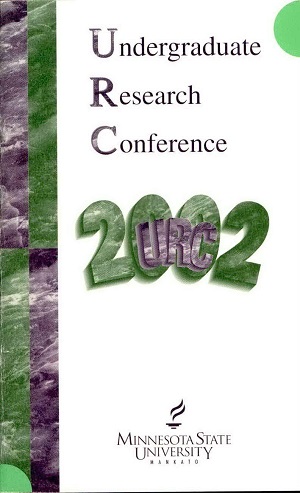The Implementation of a Customized Weather Database for Use in MSU's Walter
Location
CSU
Student's Major
Geography
Student's College
Social and Behavioral Sciences
Mentor's Name
Cecil Keen
Mentor's Department
Geography
Mentor's College
Social and Behavioral Sciences
Description
This study designed and developed a multi-media weather database for use in Minnesota State University's Weather Analysis Laboratory for Teaching and Educational Resources (WALTER). A variety of data types (from local observational temperatures, pressures, wind-speeds, directions etc) and data formats (radar, satellite, picture maps, and text) needed to be considered in this development. Furthermore, the times at which data become available was highly variable - from minute for local observations to 3 or 6-hourly recording sessions for satellite and model outputs. This required a highly customized approach to the programming structure for the input data. For subsequent retrieval and searching of the database, a variety of needs from climatological searches (trends, spans, etc.) to specific meteorological calls (e.g. temperature or weather at a specific time, satellite or radar imagery at a time, or tornado alert times) had to be accommodated for. Examples of the sensors, data types, and the retrieval processes will be demonstrated. It is anticipated that by the end of the semester, users will be able to access WALTER'S database from the website at .
The Implementation of a Customized Weather Database for Use in MSU's Walter
CSU
This study designed and developed a multi-media weather database for use in Minnesota State University's Weather Analysis Laboratory for Teaching and Educational Resources (WALTER). A variety of data types (from local observational temperatures, pressures, wind-speeds, directions etc) and data formats (radar, satellite, picture maps, and text) needed to be considered in this development. Furthermore, the times at which data become available was highly variable - from minute for local observations to 3 or 6-hourly recording sessions for satellite and model outputs. This required a highly customized approach to the programming structure for the input data. For subsequent retrieval and searching of the database, a variety of needs from climatological searches (trends, spans, etc.) to specific meteorological calls (e.g. temperature or weather at a specific time, satellite or radar imagery at a time, or tornado alert times) had to be accommodated for. Examples of the sensors, data types, and the retrieval processes will be demonstrated. It is anticipated that by the end of the semester, users will be able to access WALTER'S database from the website at .



